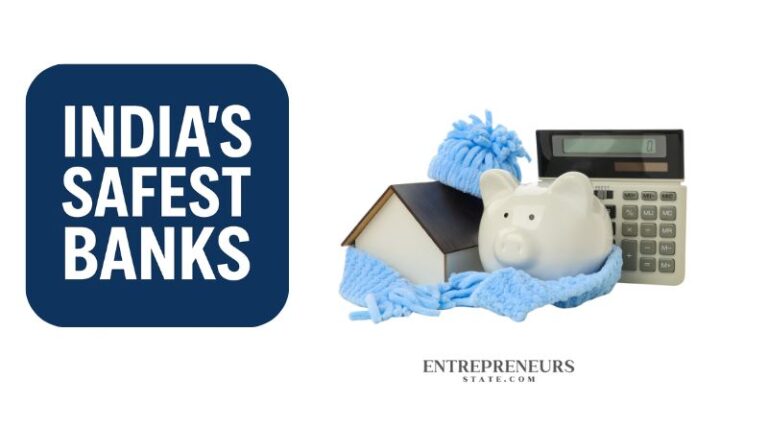Table of Contents
ToggleUnderstanding the Concept of India’s Safest Banks
In a vast and diverse financial ecosystem like India’s, the safety and reliability of banks play a crucial role in building public confidence. When we talk about India’s safest banks, we refer to financial institutions that not only ensure the security of customer deposits but also demonstrate consistent performance, transparency, and strong governance. These banks maintain stable credit ratings, strong capital adequacy ratios, and efficient management practices that protect customer interests even in times of economic instability.
The Reserve Bank of India (RBI) and credit rating agencies like Moody’s, CRISIL, and ICRA evaluate banks on multiple parameters, such as asset quality, liquidity, profitability, and risk management. Banks that score high in these areas are regarded as the most reliable and secure options for both retail and corporate customers.
Key Factors That Define India’s Safest Banks
1. Strong Financial Stability
One of the primary indicators of a bank’s safety is its financial health. The safest banks in India maintain high capital adequacy ratios as mandated by the RBI’s Basel III norms. This ensures that the banks have enough capital reserves to absorb potential losses during financial crises.
2. High Credit Ratings
Credit ratings provide an independent assessment of a bank’s ability to meet its financial obligations. Banks such as HDFC Bank, State Bank of India (SBI), and ICICI Bank consistently receive strong ratings from global and domestic agencies. These ratings enhance their reputation as some of India’s safest banks.
3. Government Backing and Regulation
Public sector banks often enjoy an added layer of safety because they are backed by the Government of India. Institutions like the State Bank of India and Bank of Baroda are considered secure since government ownership ensures support during economic downturns.
4. Asset Quality and Risk Management
The safest banks manage their Non-Performing Assets (NPAs) efficiently. Low NPA ratios indicate that banks have strong credit assessment and recovery processes. Effective risk management policies also ensure that customers’ deposits and investments remain protected even during market fluctuations.
Top Examples of India’s Safest Banks
1. State Bank of India (SBI)
As the largest public sector bank, SBI holds a reputation for reliability and trust. It operates under direct government supervision, making it one of India’s safest banks for both savings and fixed deposits. SBI’s nationwide presence and robust digital banking services further strengthen its position.
2. HDFC Bank
HDFC Bank is widely recognized for its excellent financial discipline and consistent performance. It maintains high profitability, minimal NPAs, and efficient customer service. These factors make it one of the most stable and secure private sector banks in India.
3. ICICI Bank
ICICI Bank’s strong capital base, diversified portfolio, and adoption of advanced digital technologies contribute to its safety. Its international presence also showcases its credibility and financial strength in the global market.
4. Kotak Mahindra Bank
Kotak Mahindra Bank has earned a reputation for prudence and innovation. Its conservative lending practices, combined with efficient management, make it a trusted choice among India’s safest banks.
5. Axis Bank
Axis Bank balances growth with risk control, maintaining strong liquidity and sound financial metrics. The bank’s focus on transparency and governance further adds to its reliability.
Why Choosing India’s Safest Banks Matters
Selecting a secure bank is essential for ensuring the protection of your savings, investments, and financial transactions. The safest banks provide not only deposit safety but also smooth access to financial products such as loans, credit cards, and digital banking solutions. They uphold customer trust through ethical practices and continuous innovation.
Moreover, during periods of economic uncertainty, India’s safest banks act as pillars of stability. They safeguard depositor interests, maintain service continuity, and support national economic growth through responsible lending and investment policies.
Conclusion
In today’s dynamic financial landscape, choosing from India’s safest banks ensures peace of mind and long-term financial security. Whether it’s a government-backed institution like SBI or a private sector leader like HDFC Bank, these banks combine financial discipline, innovation, and trustworthiness. As the Indian economy continues to expand, the commitment of these banks to safety and stability remains a cornerstone of the nation’s financial strength.
read also: Crop Top Lehenga


